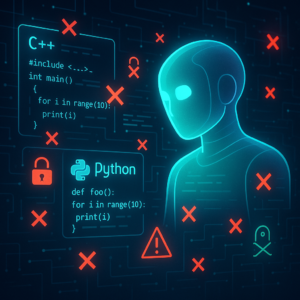How AI is Helping Create Viral Short Videos: What the Latest Research Reveals

How AI is Helping Create Viral Short Videos: What the Latest Research Reveals
Short videos have taken over the internet. Whether it’s TikTok, Instagram Reels, or YouTube Shorts, millions of viewers engage with quick, bite-sized content every day. But making these videos isn’t as easy as it looks—coming up with ideas, writing engaging scripts, and editing the footage can take a lot of time and effort.
Now, artificial intelligence is stepping in to make things easier. A recent study introduces LLMPopcorn, a framework that explores how Large Language Models (LLMs) like ChatGPT and DeepSeek can assist in creating popular short videos. The goal isn’t just to generate content but to optimize it for virality.
So, how well do AI-powered tools stack up against human creators? Let’s dive into the research and see what it means for content creators and AI enthusiasts alike.
The Problem: Making Popular Videos is Hard
Creating viral short videos isn’t just about having high-resolution footage. People engage with content that stirs emotions, tells a compelling story, or fits into trending themes. However, there are several challenges:
- Content Ideation: Coming up with fresh, engaging ideas frequently is difficult.
- Scripting & Storytelling: Crafting captions, voiceovers, and engaging narratives takes time.
- Production & Editing: High-quality visuals and smooth transitions require professional skills.
With AI’s rapid advancements in text and video generation, researchers wanted to know: Can LLMs help simplify and improve this process? Instead of just generating random videos, can AI create content that is more likely to go viral?
Enter LLMPopcorn: AI-Powered Video Creation
The study introduces LLMPopcorn, a pipeline that combines AI models to assist in short video production. Here’s how it works in simple terms:
- User Gives a Video Idea – A person provides a short prompt like “Create a video showcasing Goku’s most iconic transformations in Dragon Ball.”
- AI Generates a Title and Storyline – An LLM takes this input and produces a catchy title and a detailed prompt for a video.
- AI Generates the Video – A separate AI video generation model then creates a short video based on the detailed prompt.
- AI Evaluates Popularity Potential – A pre-trained machine learning model scores how likely the generated video is to become popular based on past data from popular short videos.
Popularity Testing: Can AI Beat Human Creators?
To test how well LLMPopcorn works, researchers compared its output against real short videos made by humans. They analyzed how different LLMs performed in generating video ideas that led to higher engagement.
Here’s what they found:
- Some AI-generated videos performed as well as human-made videos in terms of estimated popularity.
- The DeepSeek-V3 model consistently outperformed others, generating videos with higher engagement potential.
- AI was more effective for abstract prompts (e.g., “A motivational story about overcoming failure”) compared to concrete prompts (e.g., “Top 5 gadgets for students in 2024”).
Making AI-Generated Videos Even More Engaging
One of the key challenges was improving the quality of AI-generated videos. Researchers introduced an advanced Prompt Enhancement (PE) technique to help LLMs generate better content.
How Does Better Prompting Improve Video Popularity?
Think of prompting as giving instructions to an AI assistant. Simple or vague instructions can lead to generic, uninspiring content. But better-structured prompts can lead to more engaging video ideas.
To enhance prompts, the study used:
- Retrieval-Augmented Generation (RAG): AI retrieves real examples of popular videos based on the input and refines the prompt accordingly.
- Chain-of-Thought (CoT) Prompting: Instead of just spitting out a response, AI actively reasons through steps, similar to how a human would brainstorm content ideas.
Results: Do Enhanced Prompts Make Better Videos?
Yes! When AI models were fed improved prompts:
- The number of videos with higher predicted popularity increased.
- LLMs became more creative and engaging in their video suggestions.
- Prompt enhancements made the most difference for Creative & Abstract video ideas.
For content creators leveraging AI, this suggests a crucial insight: investing time in crafting better prompts can lead to more engaging AI-generated content.
Which AI Models Performed Best?
The study tested different LLMs and video generation models to see which ones worked best for short video creation. The competition was tight, but here’s how things shook out:
Best AI Models for Popular Video Prompts
- DeepSeek-V3 & DeepSeek-R1: These LLMs generated the most effective short video prompts with strong engagement potential.
- Llama-3.3-70B: Good at handling abstract ideas but not as strong as DeepSeek for driving popularity.
- ChatGPT-4o & Qwen-2.5-72B: Performed the worst in generating engaging content.
Best AI Models for Video Generation
- LTX-Video & HunyuanVideo: Both models created the best-quality videos based on the text prompts.
- CogVideoX-5B: Lagged behind in video quality.
The major takeaway? DeepSeek models were the best for creating viral video ideas, while LTX-Video and HunyuanVideo were the best for actual video production. Content creators wanting to use AI should pick a powerful LLM for brainstorming and a strong video generator for production.
Future of AI-Generated Viral Content
AI-generated short videos are still in their early stages, but LLMPopcorn shows great potential. However, there are challenges to overcome:
- AI-generated videos still don’t reach peak human creativity – AI doesn’t always capture emotional depth or storytelling intuition.
- Predicted popularity doesn’t guarantee real engagement – While AI models estimate engagement, how people actually react can be different.
- Real-world platform interactions are needed – Future studies will need real audience metrics (views, likes, shares) rather than just AI-based popularity predictions.
Key Takeaways
- AI Can Help Create Engaging Short Videos – Models like DeepSeek-V3 generate video ideas that sometimes outperform human creators in predicted popularity.
- Better Prompts = Better AI Content – Using enhanced prompting techniques (like RAG & CoT) improves AI-generated video engagement.
- Choosing the Right AI Model Matters – DeepSeek for text & LTX-Video for visuals is the ultimate combo for AI-assisted video creation.
- AI is Promising but Not Perfect – AI-generated videos still lack the full creativity and emotional depth of human-made content.
- Future Research Needs Real-World Testing – Audience reactions (likes, views, comments) will be the real test of AI’s ability to create actual viral videos.
Final Thought
AI is quickly transforming the way content is created, and LLMPopcorn represents an exciting step toward automated, optimized short video production. While AI-generated videos currently match human-created ones in some cases, there’s still room for improvement, especially in emotional storytelling.
For content creators, this research provides a powerful insight: AI can be a valuable assistant, but understanding how to guide it with smart prompts is key to unlocking its full potential.
Would you use AI to help create viral short videos? Let us know! 🚀🎥
If you are looking to improve your prompting skills and haven’t already, check out our free Advanced Prompt Engineering course.
This blog post is based on the research article “LLMPopcorn: An Empirical Study of LLMs as Assistants for Popular Micro-video Generation” by Authors: Junchen Fu, Xuri Ge, Kaiwen Zheng, Ioannis Arapakis, Xin Xin, Joemon M. Jose. You can find the original article here.




